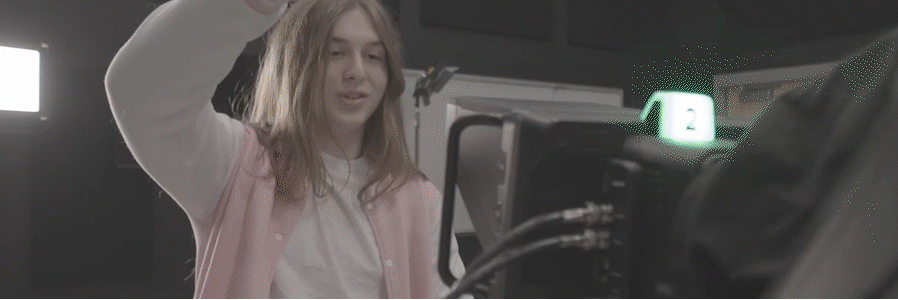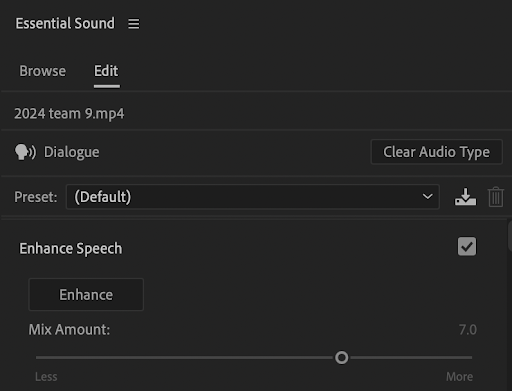TWO KEY APPROACHES TO HELPING STUDENTS MASTER THE EXTENDED ESSAY IN IB FILM
The EE, no matter what subject, is a beast.
In our school, some oversight of the process and the criteria of the essay are embedded in our Theory of Knowledge class, but several different teachers teach the class, and our students’ knowledge and expectations of the EE can vary 180 degrees from student to student.
The range of essays that I’ve supervised as an IB Film teacher over the last fifteen plus years range from 3 to 20 in any given year.
That said, there are two main tenets that students must understand in order to undertake the Extended Essay with fidelity, confidence, and success: formalism based in a comparative approach.
When starting the EE process in the spring semester of students’ junior year, I assume that the kids know nothing about the EE.
However, kids do know about what I call the Big 4: cinematography (framing, angle, movement), editing, sound design, and mise-en-scene.
In essence the Big 4 are components of FORMALISM–using the different “parts” of the film medium to understand the work as a whole. Or, to break it down more succinctly, formalism (the parts) focuses on how a text (the whole) is formed.
Just as a Lego creation is formed by different types and colors of Lego bricks, so, too, is a film created by using the various components of cinematography, editing, sound design, and mise-en-scene to tell a whole story (again, part to whole)
In my IB film class, the curriculum revolves around these technical aspects of film–both in terms of analyzing filmmaker intentions in the films that we watch, and in terms of encouraging students to use these elements to add depth and creativity and meaning to their own projects.
If you are like me, I like kids to practice with textual analysis throughout their junior year. The textual analysis asks kids to focus on formalism–how does a filmmaker manipulate the technical elements of the film medium to create meaning?
If kids can do that (and the max word count of the textual analysis is 1750 words), I tell kids that pursuing an extended essay in film is basically doing a textual analysis of two films (which would equal 3500 words, just shy of the 4,000 word essay for the Extended Essay).
In short, framing the EE as a logical extension of the textual analysis assessment that focuses on FORMALISM makes undertaking and approaching the Extended Essay more manageable for students–they’ve done something similar to it before.
You may have noticed that I mentioned comparing two texts for the Extended Essay. That’s not a mandatory approach, but I believe a COMPARATIVE methodology (and by that, I just mean “approach”) allows students to explore how two films compare and contrast within a specific movement, a specific genre, and/or a specific topic.
Over the years, I found that encouraging kids to deeply explore two films is more than enough to write the Extended Essay (which posits that kids must use at least two films), and using two films doesn’t overwhelm them in the initial phase of starting the Extended Essay in terms of watching and choosing and researching multiple films.
In closing, I like for kids to know two things about undertaking the essay in IB film:
One, they had better like to analyze films (similar to the textual analysis assessment)
Two, they’ll need to pair together two films that have some connective tissue.
Again, this is my approach to guiding students in the introductory phase of the Extended Essay. It is not an official approach mandated nor endorsed by IB. But, it has helped me guide my students towards a successful essay while also limiting some of the stress and pain that writing a 4000 word essay may entail.
Good luck out there, teachers.
Stayed tuned for the next article that offers some guidance how to find and craft a research question for the Extended Essay.
Questions or comments? Email me at streamsemester@gmail.com and either include my name in the subject line or reference the article.
Works Cited
Hellerman, Jason. “What Is Formalism in Film and TV,” No Film School. 1 September 2023. Web Accessed 22 June 2024.
Kim, Eric. “21 Stanley Kubrick Photography Composition Lessons,” Eric Kim Photography. Web. Accessed 22 June 2024.
Meet the Author, Adam Russell
Adam Russell lives and works in Marietta, Georgia. He is finishing his 22nd year of teaching both film and literature. A 13 year veteran of teaching IB Film, Adam seeks to constantly refine and demystify the art of teaching within the IB framework to help teachers and students find success. In his spare time, he writes feature length scripts and consumes anything and everything that he can get his hands on regarding film: screenplays, films, video essays, books on screenwriting, etc. Comments or questions: write ADAM in the subject line and email streamsemester@gmail.com.















As summer winds down, the familiar rhythm of a new school year approaches. For educators like James Peach, the weeks leading up to students' return aren't just about shuffling papers; they're a strategic dance of preparation, aiming to ignite inspiration and cultivate self-sufficiency.